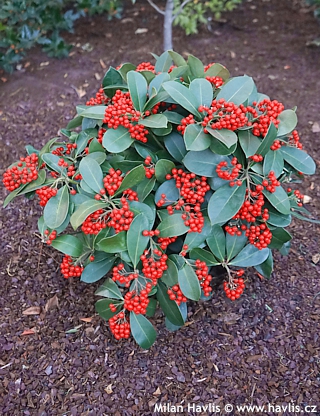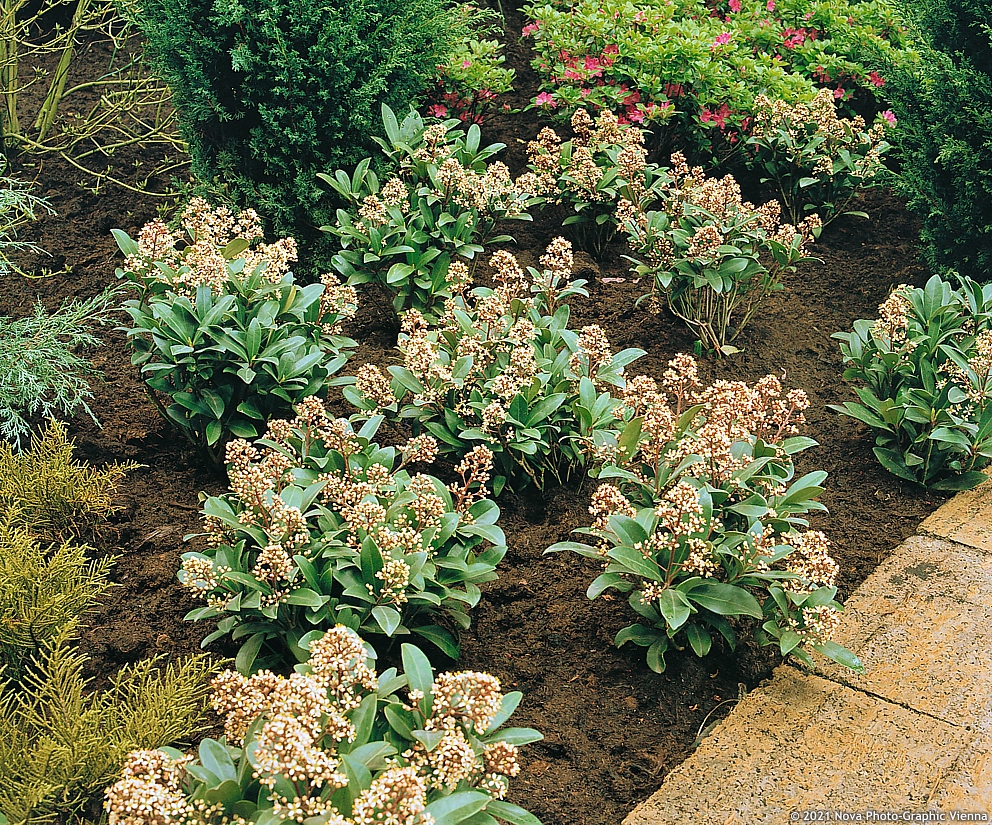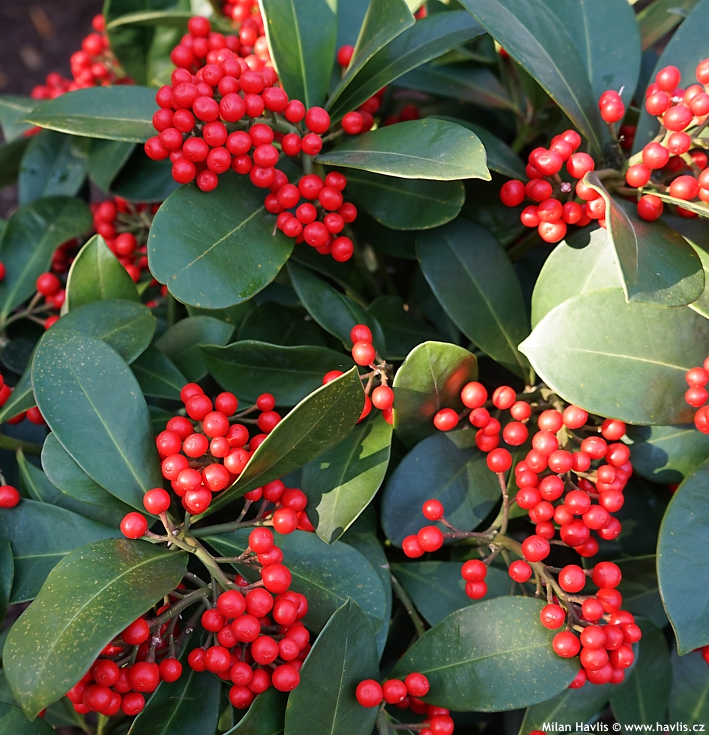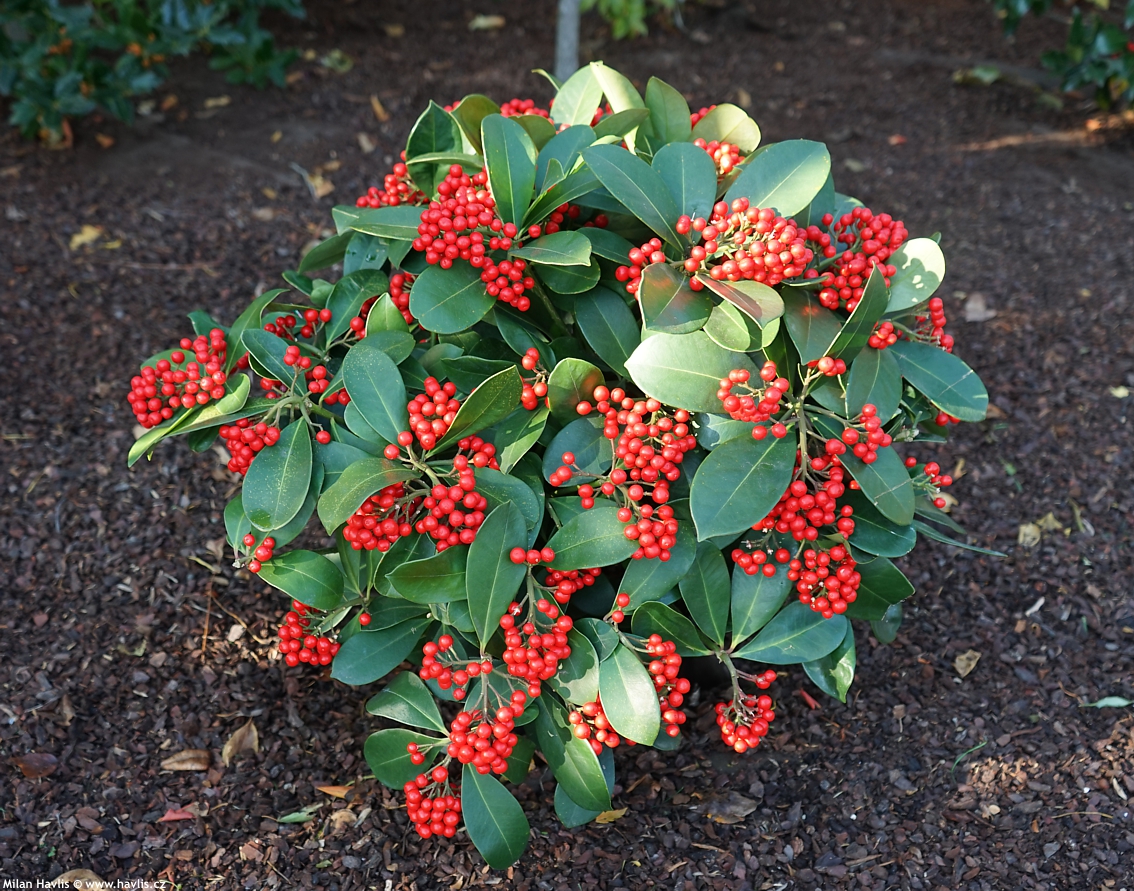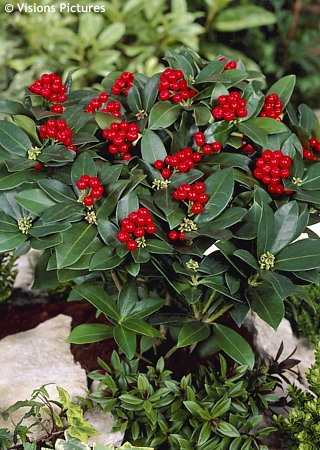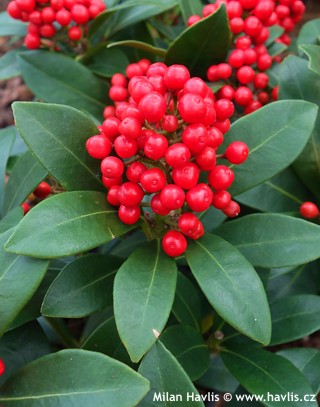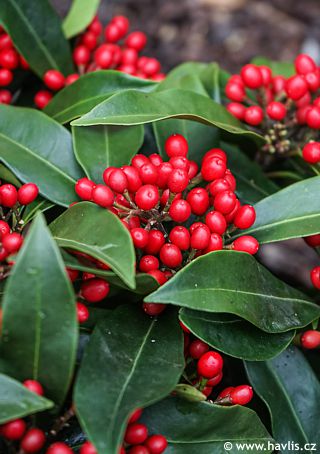Skimmia japonica 'VEITCHII' Japanese skimmia
Skimmia
Skimmia is a small, evergreen shrub whose natural habitat was long believed to be only in Japan but it was also found growing in China and other parts of SE Asia. It was never documented who had brought or described the first plants in Europe but there are records of a renowned Scottish botanist Robert Fortune (1812-1880) who travelled to Asia collecting plants and seeds. In China he found a different looking skimmia with hermaphrodite (self-fertile) flowers which he named skimmia fortunei. Only after his death the botanists analyzed the plant and classified it as a subspecies of s. japonica, yet honouring his discovery.
After the year 2000 there have been a number of new varieties which are still being tested for stability of their featured characteristics. The aim is to select plants distinctly different from the species. They are usually split by sex: profusely flowering male plants, and attractive fruit producing female plants. Varieties also differ from one another by habit, and lately also leaf colour, respectively its variegation. Worth mentioning are also current biochemical studies of furanocoumarins, organic compounds produced by a variety of plants including skimmia, believed to assist in fighting cancer.
Veitchii is a sought-after and very attractive female variety of Japanese skimmia. It boasts large, evergreen, broadly elliptic to obovate, dark green, and glossy leaves. In autumn are formed terminal panicles composed of tiny buds which burst into white, very fragrant flowers in early spring. If pollinated by pollen from a male variety growing nearby, they are followed by large, spherical, vibrant red berries in autumn. It grows slowly into a mounding shrub about one meter tall and one and a half meters wide in maturity.
Nowadays in garden centres you can often find beautiful plants with berries all over the plant without any branches above them blocking the view. It is not natural, though. Those “blocking branches” were removed by the producers in nurseries who wanted to enhance the display of fruit. But those branches would have carried flower buds to produce berries again the following year, so don’t be surprised not to arrive in flowers or berries in the coming year but the year after.
This variety was first described by a French botanist Élie-Abel Carrière in horticultural magazine Revue horticole in 1874. John Gould Veitch (1839-1870) was named the discoverer, one of the men from the large British dynasty of botanists and nurserymen. Paradox: this Veitch was in direct competition with another significant botanist of his era, the above mentioned Robert Fortune, who incited British nurseries to grow skimmias and promoted this plant among landscape architects, not only because he had one of his own, and thanks to whom the British Isles became a new home for skimmia. An interesting fact confirming their competing was that they both claimed discovery of a new taxon Chamaecyparis pisifera as they both sent its plants from Japan and China even on the same ship to England, probably in 1861. This battle was won by Robert Fortune.
Planting skimmia well is the key success to its future performance. This beauty needs perfect soil to look well, no exaggerations, believe me. It has to be always moist but extremely well-drained, acidic (add peat), light (add leaf mould), and most of all humus-rich. The best location is dappled shade or even deep shade (shady back of your house or under thick canopies of tall trees). When leaves turn pale or even yellow the plant suffers from too much sun or water, or too little nutrients in the soil.
Skimmia is tolerant of atmospheric pollution which makes it an ideal choice for urban landscapes. Being suitable for all-year-round cultivation in outdoor pots it is widely used by trendy restaurants and cafes as a decoration of their outdoor seating areas where thanks to its compact habit it does not take up space. Just avoid sunny locations. Pruning is not recommended. The plant is poisonous. It is hardy to about -25 °C (USDA zone 5b-6).
Last update 31-10-2021

































